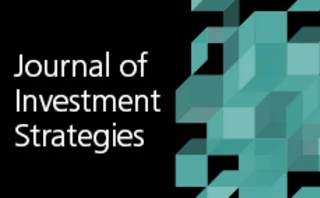Technical paper/Foreign exchange
A comparison of FX fixing methodologies
FX fixing outcomes are mostly driven by length of calculation window
Obtaining arbitrage-free FX implied volatility by variational inference
An ML-based algorithm that provides implied volatilities from bid-ask prices is proposed
Locational arbitrage strategies for Shanghai crude futures
The authors investigate crude oil futures introduced on the Shanghai International Energy Exchange in March 2018 and the locational trading strategies they can provide and put forward an example of locational arbitrage hedged against foreign risk.
Dealing with multi-currency inventory risk in FX cash markets
A market-making model that considers correlation, transaction costs and market impact is presented
Trading the vol-of-vol risk premium
Applications of the vol-of-vol parameter for cross-asset derivatives are presented
Market-making by a foreign exchange dealer
An optimal liquidity model for pricing and hedging decisions is presented
Automated market-making for fiat currencies
A framework to exchange fiat currencies on-chain consistently with off-chain prices is presented
Estimating value-at-risk using quantile regression and implied volatilities
In this paper the authors propose a semi-parametric, parsimonious value-at-risk forecasting model based on quantile regression and readily available market prices of option contracts from the over-the-counter foreign exchange interbank market.
Quantization-based Bermudan option pricing in the foreign exchange world
This paper proposes two numerical solutions based on product optimal quantization for the pricing of Bermudan options on foreign exchange rates.
Optimal foreign exchange hedge tenor with liquidity risk
The authors develop an optimal currency hedging strategy that allows fund managers who own foreign assets to choose the hedge tenors that will maximize their foreign exchange carry returns within a liquidity risk constraint.
A review of the foreign exchange base currency approach under the standardized approach of the Fundamental Review of the Trading Book and issues related to the pegged reporting currency
When we adopt the parameters in the BCBS standards to calculate the delta risk charge, anomalies in the risk charges for the same risk exposure are found under different approaches and under different reporting currencies. The anomalies increase when the…
Introducing two mixing fractions to a lognormal local-stochastic volatility model
In this paper, the authors introduce two mixing fractions that can be controlled separately to apply impact to the volatility-of-volatility and the correlation in a lognormal LSV model.
Finding the nearest covariance matrix: the foreign exchange market case
The authors consider the problem of finding a valid covariance matrix in the foreign exchange market given an initial nonpositively semidefinite (non-PSD) estimate of such a matrix.
Connecting equity and foreign exchange markets through the WM “Fix”: a trading strategy
In this paper, the authors show the connection between equities and foreign exchange markets via this window, they leverage this connection using an algorithmic trading strategy and rank various statistical techniques used to make predictions for trading…
The market generator
A generative neural network is proposed to create synthetic datasets that mantain the statistical properties of the original dataset
Currency risk in foreign currency accounts for small and medium-sized businesses
This paper estimates the currency exposure before and after the hedging of active foreign currency (FC) accounts, using stochastic models for spot exchange rates and cashflow movements.
Levelling the playing field of the FRTB’s forex rules
Hany Farag argues that changing the base currency may address FRTB forex asymmetry
CVA wrong-way risk: calibration using a quanto CDS basis
Tsz-Kin Chung and Jon Gregory calibrate wrong-way risk with the help of quanto CDS values
A review of the fundamentals of the Fundamental Review of the Trading Book II: asymmetries, anomalies, and simple remedies
This paper highlights some anomalies and asymmetries in the new market risk paradigm of the Fundamental Review of the Trading Book (FRTB) framework.
Foreign exchange correlation swap: problem solver or troublemaker?
A correlation structure is an important element in pricing products such as correlation swaps













